#hjalmar johansen
Text




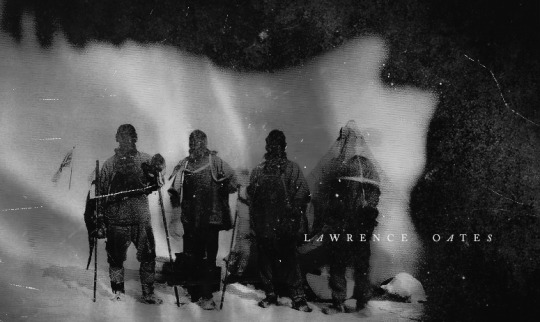




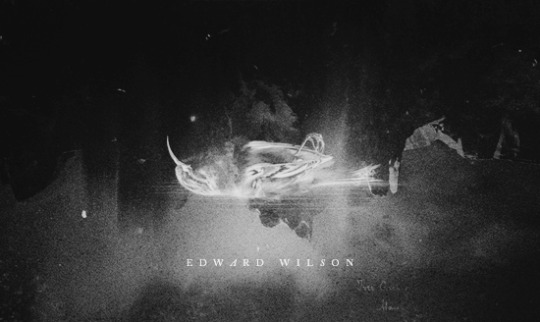

The heroic age of Antarctic exploration
- after The Terror opening credits
#polar exploration#antarctica#heroic age#roald amundsen#apsley cherry-garrard#frank wild#ernest shackleton#lawrence oates#xavier mertz#belgrave ninnis#arnold spencer-smith#hjalmar johansen#emile danco#edward wilson#robert falcon scott#belgica#endurance#terra nova#fram#LOTTA TAGS. LOTTA BOYS.#sorry if the gutters are weird i hate this new post editor so much lmao#my: graphic#*
635 notes
·
View notes
Text
so during amundsen's 1910-1912 south pole expedition, they had some debate about whether single or double sleeping bags were better
almost all of them preferred the single sleeping bags, except for prestrud and johansen, who used a double for a while c:
prestrud pov:
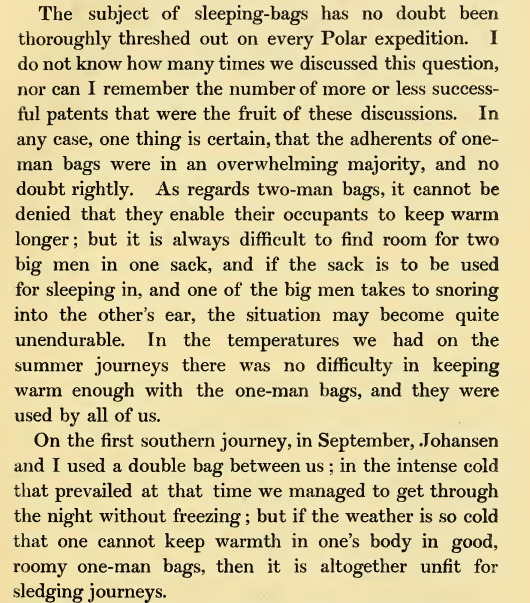
amundsen pov:
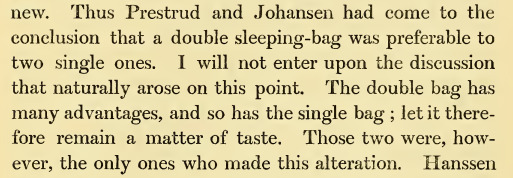


— "The South Pole: An Account of the Norwegian Antarctic Expedition in the Fram" (1912), translated from the Norwegian by A. G. Chater (vol 1, vol 2)
#roald amundsen#kristian prestrud#hjalmar johansen#antarctica#ahi's ramblings#my mariali fic still kinda stalled atm so in the meantime have this i guess lol ^_^;;)
4 notes
·
View notes
Text
POLAR EXPLORERS SHOWDOWN: ROUND 2
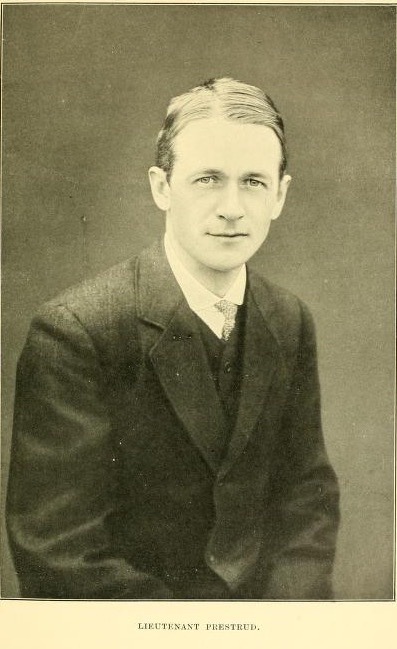
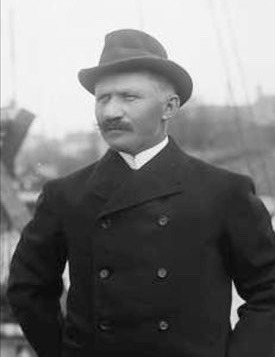
3 notes
·
View notes
Photo
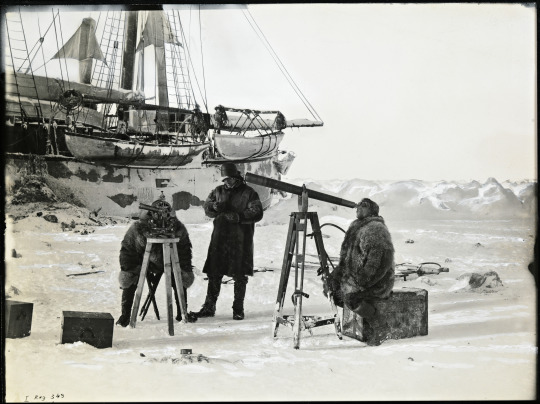
Observasjoner av solformørkelsen. Fra venstre: Hjalmar Johansen, Fridtjof Nansen og Sigurd Scott Hansen. Polhavet, 6. april 1894.
76 notes
·
View notes
Photo

The history of the human race is a continual struggle from darkness into light. It is, therefore, to no purpose to discuss the use of knowledge; man wants to know, and when he ceases to do so, is no longer a man.
- - Fridtjof Nansen, Norwegian pioneer Polar explorer, champion skier, scientist, diplomat, humanitarian, and Nobel Peace Prize laureate.
Born in Christiania, one time name of the present day Oslo, into a family of jurists, Fridtjof Nansen (1861-1930) was a passionate nature lover from a young age. He studied zoology at University and began working at the Museum of Natural History in Bergen, where he started out with research on the nervous system of marine animals, following the teaching of Golgi despite his early inclination and support for Cajal’s neuron theory. Despite his interest in and focus towards laboratory research, it was nature that attracted him most, and between August and October 1888 he embarked upon the adventure of being the first to cross Greenland from East to West, a distance of 500 km, marching on skis; this at a temperature of minus 45 °C. And he remained there throughout the winter to study the life of the Eskimos or the Inuit, the name preferred by them.
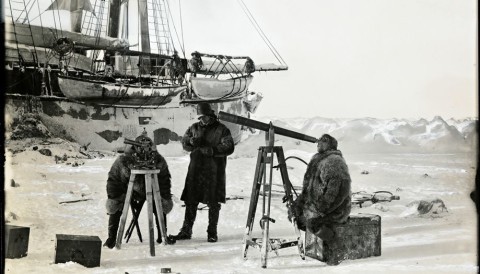
Back in Norway, Nansen taught at the Zoological Institute of Oslo and published two books: The First Crossing of Greenland (1890) and Eskimo Life (1891). Shortly after his return, he presented, before the Norwegian geographical society, a project for a maritime expedition towards the North Pole. He conceived it with the purpose of redressing and compensating for the previous failure: that which the ship The Jeanette suffered in an earlier attempt, caused by the force of the ice, crushing the ship. With the funds he succeeded in raising, he ordered the Fram (“Forward”) to be built, a ship designed to withstand the pressure of the ice by rising over it. Preparing for an expedition of two or three years, he ordered fuel, food, scientific documents and instruments to be shipped on board.

In 1893, the Fram set sail and was left to drift between the ice flows towards the Arctic on a trip that was to last more than three years. Nansen’s expedition crossed the Arctic Ocean for the first time, discovering the existence of a deep polar basin. After more than a year allowing themselves to drift through the ice, Nansen and his companion Hjalmar Johansen, came to the conclusion that the current would never carry them up to the North Pole and on March 14, 1895 they decided to abandon ship and set out for the North Pole on foot. They had to give up their goal and finally returned to find the Fram in the port of Tromsoe. On September 9th they landed at the port of Oslo, acclaimed by the citizens. Despite not having achieved its goal, the expedition claimed the most northern position man was ever known to have reached and made outstanding scientific contributions on oceanography, climate, hydrography, ice formation and the study of its fauna. Appointed Professor of Zoology and Oceanography at the Royal Frederick University in Oslo, Nansen published six volumes on the expedition and its scientific observations.

In addition to a remarkable scientific career and as explorer of nature in extreme conditions, Nansen was a fighter for the independence of Norway and, despite his Republican ideology, finally defended the monarchist option for pragmatic reasons. After independence was declared, Nansen was appointed as the first Ambassador of Norway to London (1906-1908), while continuing to participate in oceanic expeditions.
During the First World War he was head of the delegation that negotiated an agreement in Washington for the supply of food to areas blockaded by the war and at the end of the conflict he was appointed High Commissioner of the League of Nations arranging the exchange of prisoners and aid to the Russian refugees. He created the Nansen Passport, an international identity document that made possible the release and repatriation of more than 450,000 prisoners.
In 1921 he led a campaign of the Red Cross against the hunger crisis that was devastating rural areas of Russia. He also held the post of international mediator in the conflicts between Greece and Turkey and in the war between Armenia and Turkey. On December 10th 1922 he was awarded the Nobel Peace Prize.

An emblematic figure in his country, he had all manner of honours and awards bestowed upon him both before and after his death. The Fram can still be seen in the Museum of the island of Bygdøy near Oslo. The many scientific and personal biographies of Nansen reflect the importance of the scientific spirit he represented and the political and human commitment of science during the critical period of the early decades of the twentieth century.
#fridtjof nansen#nansen#quote#norsk#norwegian#travel#explorer#hero#icon#pioneer#polar#science#expedition#norway#journey#exploration#snow
56 notes
·
View notes
Text
Presentasjon av meg
Jeg heter Sander Hauge, er 20 år og kommer fra Skien.
Jeg gikk elektro på Skogmo vgs i to år. Det andre året mitt der valgte jeg fordypning i ‘Data og elektronikk’. Det tredje året valgte jeg å satse på noe annet, det ble derfor påbygg på Hjalmar Johansen vgs for å få generell studiekompetanse. Etter det gikk jeg ett år på filmlinja på Danvik Folkehøgskole i Drammen. Der fikk jeg nyttig erfaring innenfor film både praktisk og teoretisk.
Utenom dette har jeg laget småfilmer og redigert videoer gjennom hele oppveksten. Jeg har også alltid vært veldig glad i å skrive egne historier.
Det er litteratur- og filmdelen av studiet som interesserer meg mest. Jeg elsker å se film uansett sjanger så lenge de er engasjerende og bra skrudd sammen. Noen av favorittfilmene mine er: Donnie Darko, Shutter Island, The Matrix, One Flew Over the Cockoo’s Nest, K-Pax.
Jeg leser også bøker fra tid til annen. Noen av favorittbøkene mine er: Harry Potter (J.K. Rowling), Different Seasons, Misery, Carrie (Stephen King), Watchers (Dean Koontz).
1 note
·
View note
Text


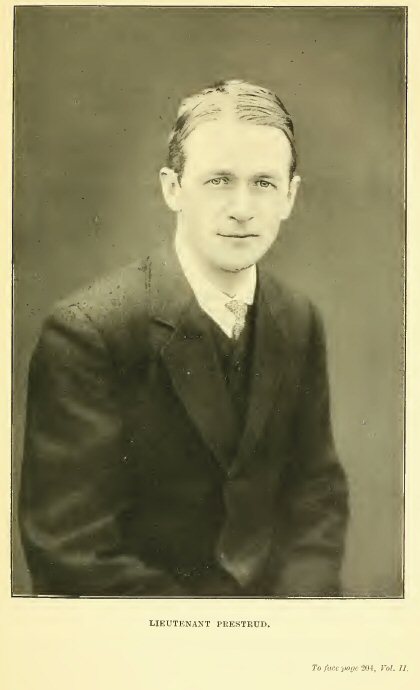

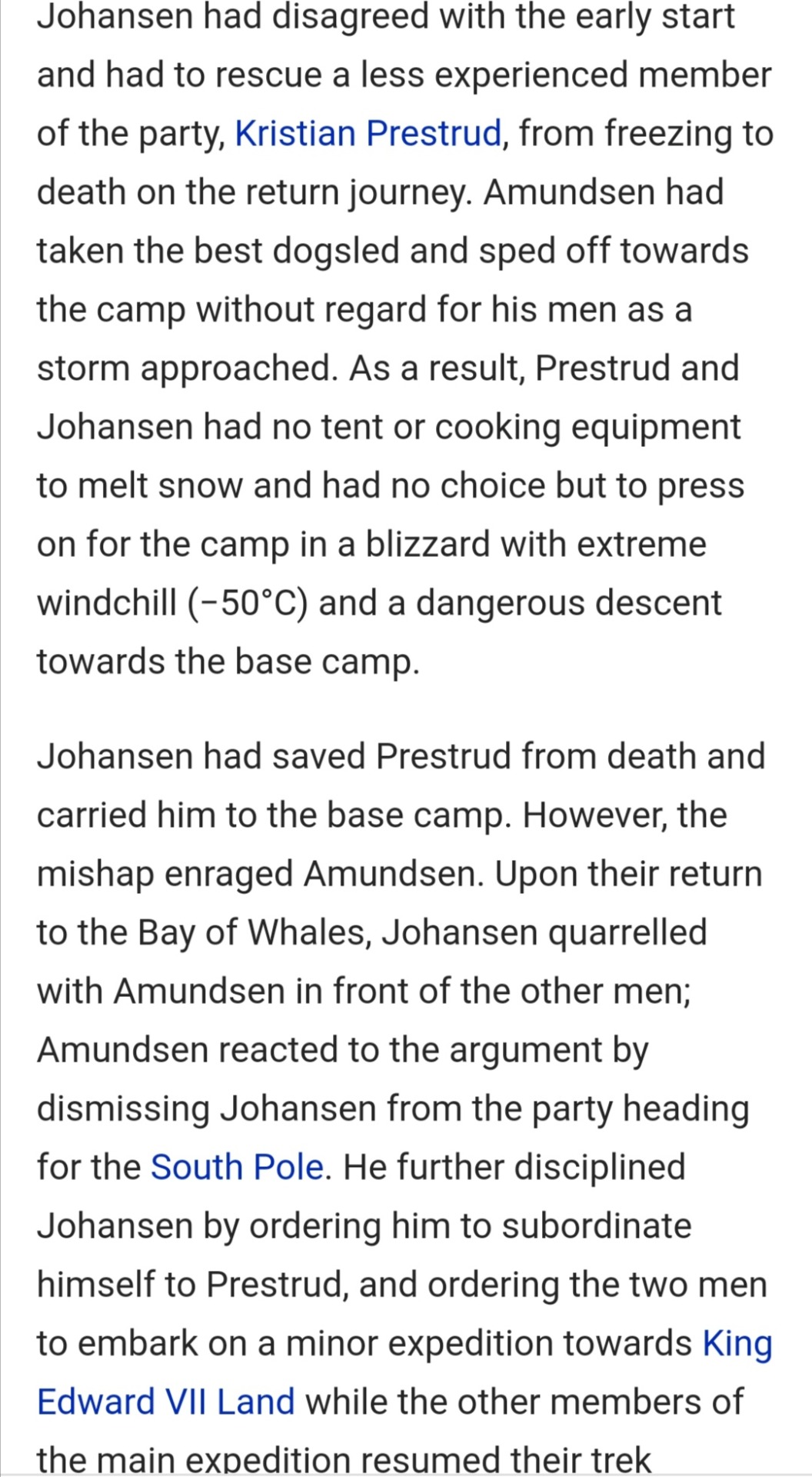
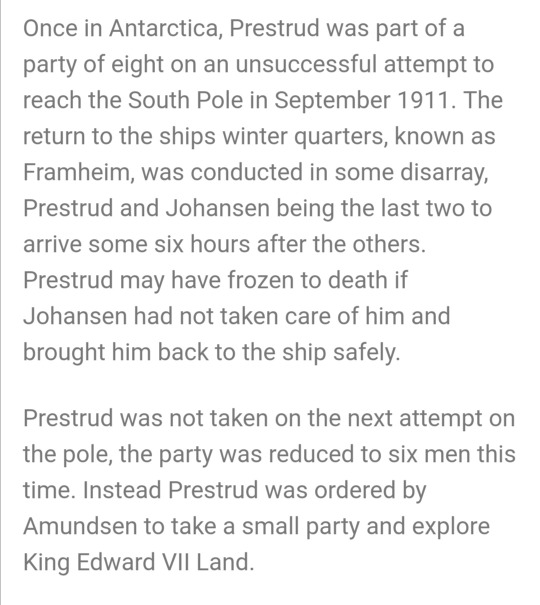
*shipping intensifies...
For context, these are Lieutenant Kristian Prestrud (1881-1927) and Fredrik Hjalmar Johansen (1867-1913), both members of Amundsen's Antarctic expedition. They seemed very close, going by Amundsen's account. Johansen saved Prestrud's life and for some reason Amundsen seems really pissed off with this. Then they made a shared sleeping bag, as recounted above in Amundsen's book 'The South Pole.' Then Amundsen banned them from coming on the second attempt on the Pole and sent them off together to explore King Edward VII Land instead, then chucked Johansen off the ship in Tasmania on their way home. Both men committed suicide, Johansen in 1913, supposedly as a result of being disgraced by Amundsen, and Prestrud in 1927 (apparently no one knew why).
I know these things don't mean they were gay, but they sure as hell don't mean they weren't gay.
9 notes
·
View notes
Link
Fredrik Hjalmar Johansen (15 May 1867 – 3 January 1913) was a Norwegian polar explorer. He participated on the first and third Fram expeditions. He shipped out with the Fridtjof Nansen expedition in 1893–1896, and accompanied Nansen to notch a new Farthest North record near the North Pole. Johansen also participated in the expedition of Roald Amundsen to the South Pole in 1910–1912.
0 notes
Text
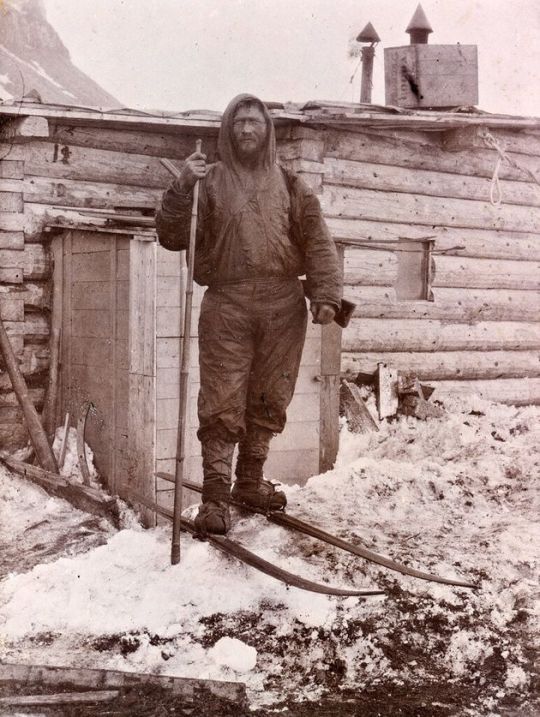
La storia di Hjalmar Johansen lesploratore che voleva essere lasciato in pace - #storia #Hjalmar #Johansen http://dlvr.it/RWhq1m
0 notes
Text
Image taken from page 359 of 'In Nacht und Eis. Die norwegische Polarexpedition 1893-1896 ... Mit einem Beitrag von Kapitän Sverdrup, etc. (Supplement. Wir Framleute. Von Bernhard Nordahl. Nansen und ich auf 86° 14′. Von Hjalmar Johansen, etc.)'

Image taken from:
Title: "In Nacht und Eis. Die norwegische Polarexpedition 1893-1896 ... Mit einem Beitrag von Kapitän Sverdrup, etc. (Supplement. Wir Framleute. Von Bernhard Nordahl. Nansen und ich auf 86° 14′. Von Hjalmar Johansen, etc.)"
Author: Nansen, Fridtjof
Contributor: SVERDRUP, Otto Neumann.
Shelfmark: "British Library HMNTS 10460.dd.30."
Volume: 02
Page: 359
Place of Publishing: Leipzig
Date of Publishing: 1897
Issuance: monographic
Identifier: 002603738
Explore:
Find this item in the British Library catalogue, 'Explore'.
Download the PDF for this book (volume: 02) Image found on book scan 359 (NB not necessarily a page number)
Download the OCR-derived text for this volume: (plain text) or (json)
Click here to see all the illustrations in this book and click here to browse other illustrations published in books in the same year.
Order a higher quality version from here.
from BLPromptBot https://ift.tt/2TTFfcq
0 notes
Text
Leading scientist warns an irreversible Arctic tipping point may already be triggered
https://sciencespies.com/nature/leading-scientist-warns-an-irreversible-arctic-tipping-point-may-already-be-triggered/
Leading scientist warns an irreversible Arctic tipping point may already be triggered
The tipping point for irreversible global warming may have already been triggered, the scientist who led the biggest-ever expedition to the Arctic warned on Tuesday.
“The disappearance of summer sea ice in the Arctic is one of the first landmines in this minefield, one of the tipping points that we set off first when we push warming too far,” said Markus Rex.
“And one can essentially ask if we haven’t already stepped on this mine and already set off the beginning of the explosion.”
Rex led the world’s biggest mission to the North Pole, an expedition involving 300 scientists from 20 countries.
The expedition returned to Germany in October after 389 days drifting through the Arctic, bringing home devastating proof of a dying Arctic Ocean and warnings of ice-free summers in just decades.
The 140-million-euro ($165-million) expedition also brought back 150 terabytes of data and more than 1,000 ice samples.
Summarizing their first findings, Rex said scientists found that the Arctic sea ice had retreated “faster in the spring of 2020 than since the beginning of records” and that “the spread of the sea ice in the summer was only half as large as decades ago”.
The ice was only half as thick and temperatures measured 10 degrees higher than during the Fram expedition undertaken by explorers and scientists Fridtjof Nansen and Hjalmar Johansen in the 1890s.
Because of the smaller sea ice surface, the ocean was able to absorb more heat in the summer, in turn meaning that ice sheet formation in the autumn was slower than usual.
‘Painful’
“Only evaluation in the coming years will allow us to determine if we can still save the year-round Arctic sea ice through forceful climate protection or whether we have already passed this important tipping point in the climate system,” Rex added, urging rapid action to halt warming.
World leaders had agreed under the Paris agreement in 2015 to take action to limit global warming to well below 2 degrees Celsius, preferably to 1.5 degrees Celsius, compared with pre-industrial levels.
Stefanie Arndt, who specializes in sea ice physics, said it was “painful to know that we are possibly the last generation who can experience an Arctic which still has a sea ice cover in the summer”.
“This sea ice cover is gradually shrinking and it is an important living space for polar bears,” said Arndt, while recounting observations of seals and other animals in the polar habitat.
The data collected during the expedition included readings on the atmosphere, ocean, sea ice and ecosystems. Several hundred scientific publications analyzing the findings are expected to be published between 2021 and 2023.
During the expedition, scientists had set up four observational sites on the sea ice in a radius of up to 40 kilometers (25 miles) around the mission’s Polarstern (North Star) ship.
Among data collected were water samples from beneath the ice to study plant plankton and bacteria and better understand how the marine ecosystem functions under extreme conditions.
More than 100 parameters were measured almost continuously throughout the year.
The abundance of information will feed into the development of models to help predict what heatwaves, heavy rains or storms could look like in 20, 50 or 100 years.
© Agence France-Presse
#Nature
0 notes
Text
Polo Norte
Definição
O Ártico (Polo Norte) e a Antártica (Polo Sul) são frios porque não recebem luz direta do sol.
No entanto, o Polo Sul é muito mais frio que o Polo Norte.
Os polos norte e sul são criados na barra magnetizada oposta aos pólos do ímã ferradura, e as linhas magnéticas de força fluem através da barra do polo sul ao polo norte em uma linha reta
Polo Norte – O que é
O Polo Norte geográfico é o ponto norte do eixo de rotação da Terra.
O Polo Norte é encontrado no Oceano Ártico, em constante movimento de pedaços de gelo marinho.
O Polo Norte não faz parte de nenhuma nação, embora a Rússia tenha colocado uma bandeira de titânio no fundo do mar em 2007.
O Polo Norte é o ponto mais setentrional da Terra. É o ponto preciso da interseção do eixo da Terra e da superfície da Terra.
Do Polo Norte, todas as direções estão ao sul. Sua latitude é 90 graus norte e todas as linhas de longitude se encontram lá (assim como no Polo Sul, no extremo oposto da Terra). Polaris, a atual Estrela do Norte, fica quase imóvel no céu acima do pólo, tornando-o um excelente ponto fixo para uso na navegação celeste no Hemisfério Norte.
O Polo Norte fica no meio do Oceano Ártico, em águas quase sempre cobertas de gelo. O gelo tem cerca de 2 a 3 metros de espessura. A profundidade do oceano no Polo Norte é superior a 4.000 metros.
O território canadense de Nunavut fica mais próximo do Polo Norte.
A Groenlândia, a maior ilha do mundo e um país independente no Reino da Dinamarca, também fica perto do poste.
O Polo Norte é muito mais quente que o Polo Sul. Isso ocorre porque fica em uma elevação mais baixa (nível do mar) e está localizado no meio de um oceano, mais quente que o continente coberto de gelo da Antártica. Mas não é exatamente o clima da praia.
No verão, a estação mais quente do ano, a temperatura está no ponto de congelamento: 0 graus Celsius.
Como a Terra gira em um eixo inclinado enquanto gira em torno do sol, a luz solar é experimentada em extremos nos pólos.
De fato, o Polo Norte experimenta apenas um nascer do sol (no equinócio de março) e um pôr do sol (no equinócio de setembro) a cada ano.
Do Polo Norte, o sol está sempre acima do horizonte no verão e abaixo do horizonte no inverno. Isso significa que a região experimenta até 24 horas de luz solar no verão e 24 horas de escuridão no inverno.
Polo Norte – Localização
Pólo Norte, extremidade norte do eixo da Terra, situado no Oceano Ártico, a cerca de 725 km ao norte da Groenlândia.
Esse Polo Norte geográfico não coincide com o Polo Norte magnético – para o qual as bússolas magnéticas apontam e que, no início do século XXI, ficavam ao norte das Ilhas Queen Elizabeth, no extremo norte do Canadá, a aproximadamente 82° 15′ N 112° 30′ W ( está constantemente migrando para noroeste) – ou com o Polo Norte geomagnético, a extremidade norte do campo geomagnético da Terra (cerca de 79° 30′ N 71° 30′ W).
O pólo geográfico, localizado em um ponto em que a profundidade do oceano tem cerca de 4.080 metros de profundidade e coberto de gelo flutuante, experimenta seis meses de luz solar completa e seis meses de escuridão total a cada ano.
Qual pólo é mais frio?
O Ártico (Polo Norte) e a Antártica (Polo Sul) são frios porque não recebem luz direta do sol. O sol está sempre baixo no horizonte, mesmo no meio do verão. No inverno, o Sol está tão abaixo do horizonte que não nasce durante meses. Então os dias são como as noites – frios e escuros.
Embora o Polo Norte e o Polo Sul sejam “polos opostos”, ambos recebem a mesma quantidade de luz solar, mas o Polo Sul é muito mais frio que o Polo Norte.
O Ártico é um oceano cercado por terra. A Antártica é uma terra cercada pelo oceano.
O oceano sob o gelo do Ártico é frio, mas ainda mais quente que o gelo! Então o oceano aquece um pouco o ar.
A Antártica está seca – e alta. Sob o gelo e a neve há terra, não oceano. E tem montanhas. A altitude média da Antártica é de cerca de 2,3 km.
Ecossistemas no Pólo Norte
Ursos polares, raposas do Ártico e outros animais terrestres raramente migram para o Polo Norte.
O gelo à deriva é um habitat imprevisível e não permite rotas regulares de migração ou o estabelecimento de tocas para criar jovens. Ainda assim, os ursos polares às vezes vagam pela área em busca de comida.
O ecossistema submarino do Polo Norte é mais variado que o gelo acima dele. Camarão, anêmonas-do-mar e pequenos crustáceos habitam a área.
Alguns selos com anel foram vistos. (As focas são presas comuns dos ursos polares que vagam pela região.) Mamíferos marinhos maiores, como as baleias narwhal (narval), são muito mais raros.
Várias espécies de peixes vivem no Polo Norte.
O bacalhau do Ártico é o mais abundante. Bacalhau do Ártico são pequenos peixes geralmente encontrados perto do fundo do mar, perto de suas fontes alimentares – pequenos camarões e crustáceos.
Os pássaros são visitantes frequentes do Polo Norte.
A andorinha-do-mar ártica, que tem a maior migração anual de qualquer espécie do planeta, passa a primavera e o verão no ártico, embora raramente tão ao norte quanto o pólo norte. Depois, voa 30.000 quilômetros ao sul, até o Círculo Antártico.
A andorinha-do-mar do Ártico faz uma migração de ida e volta ao Ártico-Antártico todos os anos.
Como a andorinha-do-mar do Ártico, todos os outros pássaros vistos perto do Polo Norte são migratórios. Eles incluem a pequena estamenha de neve, fulmars e gatinhos parecidos com gaivotas.
Exploração
A principal exploração polar começou no século XIX. A primeira expedição especificamente para chegar ao Pólo Norte foi liderada pelo almirante britânico William Edward Parry em 1827.
Os exploradores noruegueses Fridtjof Nansen e Hjalmar Johansen tentaram uma expedição terrestre em 1895.
Uma expedição sueca liderada por Salomon August Andree tentou sobrevoar o norte Poste em um balão de hidrogênio dois anos depois.
A primeira pessoa a reivindicar chegar ao Polo Norte foi o explorador norte-americano Frederick Albert Cook, em 1908. Cook não foi capaz de fornecer quaisquer registros de navegação de sua conquista, no entanto, e o restante de sua equipe mais tarde relatou que eles não chegaram ao pólo. A alegação permanece controversa.
Um ano depois, outro explorador americano, Robert Peary, afirmou alcançar o Polo Norte. Peary foi apoiado e financiado pela National Geographic Society, que verificou sua reivindicação.
Está em disputa desde então.
Embora a equipe do Polo Norte de Peary incluísse outras quatro pessoas, nenhuma delas foi treinada em navegação. Portanto, eles não conseguiram verificar as alegações de Peary, e um deles, Matthew Henson, relatou uma rota conflitante de Peary. O próprio Peary nunca disponibilizou seus registros de navegação para revisão.
Os céticos notaram a velocidade notável com que a expedição viajou quando o capitão Bob Bartlett, o único outro navegador, deixou a tripulação.
Peary relatou mais do que duplicar a quantidade de território coberto diariamente assim que Bartlett deixou a expedição.
No entanto, muitos exploradores apóiam as alegações de Peary. A National Geographic (Geografia nacional) conduziu extensos estudos das fotografias que Peary tirou e concluiu que elas foram tiradas a 8 quilômetros do poste. (As fotografias em si nunca foram divulgadas.) As sondagens de profundidade feitas por Peary e Henson também parecem apoiar a alegação de terem atingido o polo.
Talvez o apoio mais importante à reivindicação de Peary tenha vindo da expedição polar do explorador britânico Tom Avery, em 2005. Avery imitou a suposta rota de Peary, usando equipes de cães de trenó.
A expedição alcançou com sucesso o Polo Norte.
A primeira expedição verificada ao Polo Norte foi conduzida pelo explorador norueguês Roald Amundsen em 1926. Amundsen não usou um navio ou trenós puxados por cães – ele sobrevoou o poste no dirigível Norge. O Norge, erguido por hidrogênio e alimentado por um motor a diesel, sobrevoou o Pólo Norte em sua rota do Ártico norueguês ao estado americano do Alasca.
As primeiras pessoas que comprovaram ter pisado no Polo Norte foram um grupo de pesquisa de geólogos e oceanógrafos da União Soviética em 1948.
Os cientistas foram levados para dentro e para fora do pólo por um período de três dias.
A primeira embarcação a chegar ao Polo Norte foi um submarino movido a energia nuclear, o USS Nautilis, em 1958. Outro submarino dos EUA, o USS Skate, rompeu o gelo do mar para surgir perto do Pólo Norte cerca de um ano depois.
As primeiras expedições verificadas para chegar ao Polo Norte a pé não ocorreram até o final da década de 1960.
Uma equipe liderada pelo explorador americano Ralph Plaisted usou motos de neve para alcançar o poste em 1968.
Um ano depois, uma expedição liderada pelo explorador britânico Wally Herbert alcançou o poste a pé, com a ajuda de trenós puxados por cães e suprimentos transportados por via aérea.
Em 1986, 77 anos depois que Robert Peary fez sua reivindicação, uma equipe liderada pelo Emérito National Geographic Explorer Will Steger se tornou a primeira expedição verificada a chegar ao Pólo Norte com trenós puxados por cães sem reabastecimento.
Pólo Norte magnético
O Polo Norte Magnético não é o mesmo que “norte verdadeiro”; fica a várias centenas de quilômetros ao sul do Polo Norte Geográfico.
O núcleo de ferro da Terra e o movimento dentro de sua parte externa geram um campo magnético, e os polos norte e sul magnéticos são onde o campo é vertical.
As bússolas apontam para o Polo Norte magnético.
No entanto, o que chamamos de Polo Norte Magnético é na verdade um pólo magnético sul. As fontes de campo magnético são dipolares, tendo um pólo magnético norte e sul. Os pólos opostos (N e S) atraem e pólos semelhantes (N e N, ou S e S) se repelem, de acordo com Joseph Becker, da Universidade Estadual de San Jose. Isso cria um campo toroidal, ou em forma de rosca, à medida que a direção do campo se propaga para fora do polo norte e entra pelo polo sul. Em outras palavras, o polo norte de um imã é atraído para o polo sul de outro imã.
Como o Polo Norte Magnético da Terra atrai as extremidades “norte” de outros ímãs, é tecnicamente o “polo sul” do campo magnético do planeta.
Os pólos magnéticos e geográficos não se alinham, e a diferença entre eles é chamada declinação.
Desde sua descoberta em 1831, o Polo Norte Magnético está localizado na ilha Ellesmere, no Canadá, a cerca de 800 quilômetros do Polo Norte Geográfico. Mas o campo magnético oscila, fazendo com que o ângulo de declinação mude ao longo do tempo.
Atualmente, o Polo Norte Magnético se move cerca de 40 km por ano, na direção noroeste – a uma taxa mais rápida do que se moveu desde o início do rastreamento, na década de 1830.
A mudança pode causar problemas na migração de aves e na navegação humana. Eventualmente, os pólos norte e sul magnéticos se moverão ao ponto em que “girarão” e as bússolas apontariam para o sul.
Essa mudança acontecerá lentamente e não em nossas vidas. O último “giro” ocorreu 730.000 anos atrás.
Resumo
O Polo Norte, também conhecido como Polo Norte Geográfico ou Polo Norte Terrestre, definidas como o ponto no Hemisfério Norte onde o eixo de rotação da Terra encontra sua superfície.
Não deve ser confundido com o Polo Magnético Norte.
O Polo Norte é o ponto mais ao norte da Terra, localizado diametralmente em frente ao Polo Sul. Ele define a latitude geodésica 90 ° norte, bem como a direção do norte verdadeiro.
No Polo Norte, todas as direções apontam para o sul; todas as linhas de longitude convergem para lá, então sua longitude pode ser definida como qualquer valor de grau.
Enquanto o Polo Sul se localiza em uma massa terrestre continental, o Polo Norte está localizado no meio do Oceano Ártico, em meio a águas que são quase permanentemente cobertas por gelo marinho em constante mudança. Isso torna impraticável a construção de uma estação permanente no Polo Norte.
No entanto, a União Soviética e, mais tarde, a Rússia, construíram uma série de estações de deriva tripuladas anualmente desde 1937, algumas das quais passaram por cima ou muito perto do pólo.
Desde 2002, os russos também estabeleceram anualmente uma base, Barneo, perto do pólo. Isso funciona por algumas semanas durante o início da primavera.
Estudos recentes previram que o Polo Norte pode ficar sazonalmente livre de gelo devido ao encolhimento do gelo no Ártico, com escalas de tempo variando do próximo ano a cinquenta anos ou mais.
Fonte: www.eurekalert.org/waterproof-expeditions.com/https://ift.tt/2MubQks
O post Polo Norte apareceu primeiro em Portal São Francisco.
Polo Norte Publicado primeiro em https://www.portalsaofrancisco.com.br/
Este conteúdo apareceu primeiro em: https://ift.tt/2E4forM
0 notes
Text
POLAR EXPLORERS SHOWDOWN: ROUND 3
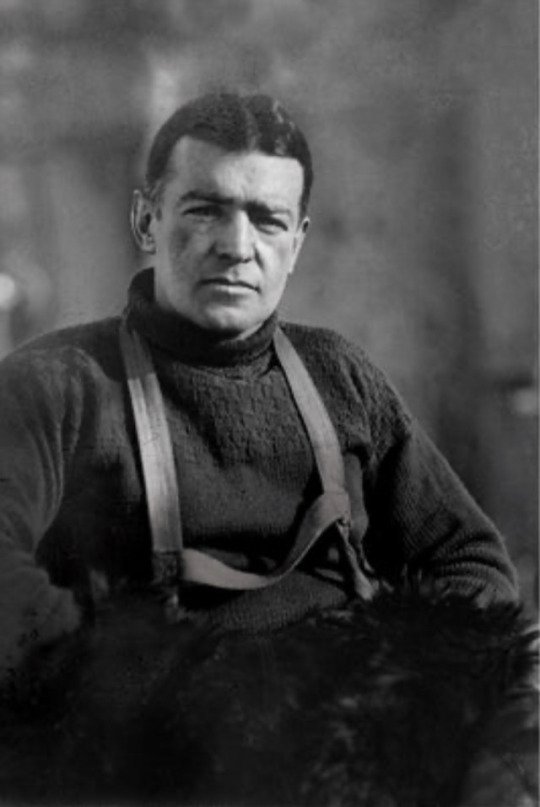

5 notes
·
View notes
Photo
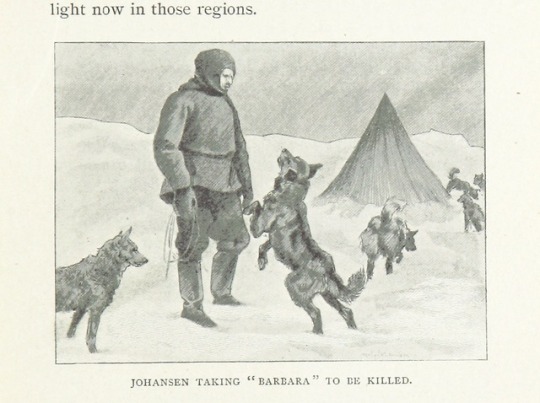
Image from 'With Nansen in the North: a record of the Fram expedition in 1893-96. ... Translated from the Norwegian by H. L. Brækstad. [With illustrations.]', 001880110
Author: JOHANSEN, Frederik Hjalmar.
Page: 207
Year: 1899
Place: London
Publisher: Ward, Lock & Co.
View this image on Flickr
View all the images from this book
Following the link above will take you to the British Library's integrated catalogue. You will be able to download a PDF of the book this image is taken from, as well as view the pages up close with the 'itemViewer'. Click on the 'related items' to search for the electronic version of this work.
#bldigital#bl_labs#britishlibrary#1899#similar_to_175731090202_bubblyness_avesize#new_train_of_thought#upperbody_detected_335left_60top_678right_341bottom#fullbody_detected_290left_54top_714right_902bottom
0 notes
Photo
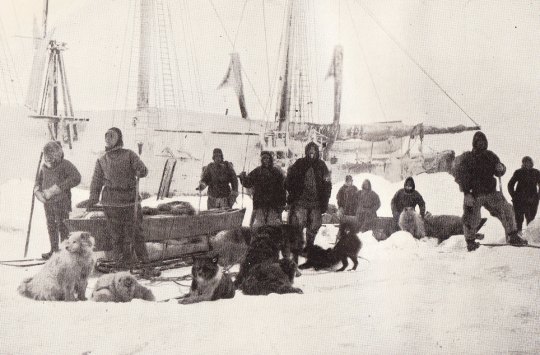
Du kan tenke dig seks bitte små mygg marsjerende over et forferdelig stort laken.**
- Fridtjof Nansen, Norwegian pioneer Polar explorer, champion skier, scientist, diplomat, humanitarian, and Nobel Peace Prize laureate.
In 1893, the Fram set sail and was left to drift between the ice flows towards the Arctic on a trip that was to last more than three years. Fridtjof Nansen’s expedition crossed the Arctic Ocean for the first time, discovering the existence of a deep polar basin. After more than a year allowing themselves to drift through the ice, Nansen and his companion Hjalmar Johansen, came to the conclusion that the current would never carry them up to the North Pole and on March 14, 1895 they decided to abandon ship and set out for the North Pole on foot. They had to give up their goal and finally returned to find the Fram in the port of Tromsoe. On September 9th they landed at the port of Oslo, acclaimed by the citizens. Despite not having achieved its goal, the expedition claimed the most northern position man was ever known to have reached and made outstanding scientific contributions on oceanography, climate, hydrography, ice formation and the study of its fauna. Appointed Professor of Zoology and Oceanography at the Royal Frederick University in Oslo, Nansen published six volumes on the expedition and its scientific observations.
**You can imagine six tiny mosquitoes marching over a terribly large sheet.
**Photograph taken on 14 March 1895 as Fridtjof Nansen prepares to leave his ship Fram and begin his sledge journey to the North Pole.
#fridtjof nansen#nansen#quote#norsk#norwegian#hero#icon#travel#adventure#pioneer#north pole#expedition#snow#polar#explorer#journey
38 notes
·
View notes
Quote
It was a beautiful sight to see the midnight sun on the horizon looking blood-red over the surface of the water strewn with innumerable ice-floes, while the sky shone blue in the far distance.
Hjalmar Johansen, from With Nansen in the North, 1899
#hjalmar johansen#polar exploration#polar explorers#explorers#arctic exploration#arctic#midnight sun
7 notes
·
View notes